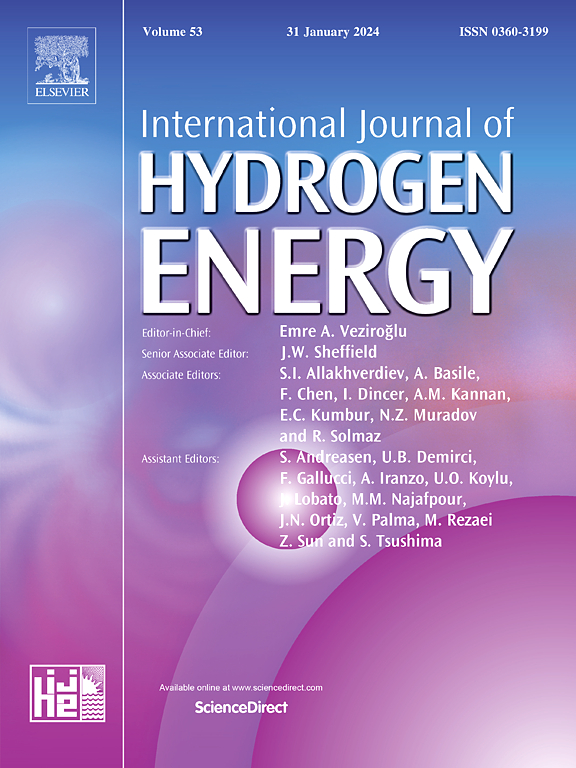Nitrogen vacancies enriched g-C3N4 nanosheets for photocatalytic CO2 reduction
IF 8.3
2区 工程技术
Q1 CHEMISTRY, PHYSICAL
引用次数: 0
Abstract
Photocatalytic carbon dioxide (CO2) reduction is an effective pathway to balance CO2 production and consumption while achieving carbon neutrality. Graphitic carbon nitride (g-C3N4) is a promising non-metal semiconductor for photocatalytic CO2 reduction. Nonetheless, the primary reason limiting the high CO2 reduction performance is still the inadequate charges separation of g-C3N4. Herein, g-C3N4 with enriched nitrogen vacancies (NVs) was synthesized at room temperature by oxalic acid treatment. As electron traps and adsorption sites, NVs improve the separation efficiency of electron-hole pairs and increase CO2 adsorption capacity. As a result, the photocatalytic CO2 reduction activity of g-C3N4 can be improved with optimized 11CN having an activity 2.8 times of that of g-C3N4.
氮空位富集的g-C3N4纳米片光催化CO2还原
光催化二氧化碳(CO2)还原是平衡二氧化碳生产和消耗同时实现碳中和的有效途径。石墨氮化碳(g-C3N4)是一种很有前途的光催化CO2还原非金属半导体材料。然而,限制g-C3N4高CO2还原性能的主要原因仍然是g-C3N4电荷分离不充分。本文通过草酸处理,在室温下合成了富氮空位(NVs)的g-C3N4。NVs作为电子陷阱和吸附位点,提高了电子空穴对的分离效率,增加了CO2的吸附能力。结果表明,优化后的11CN的光催化CO2还原活性是g-C3N4的2.8倍,可以提高g-C3N4光催化CO2还原活性。
本文章由计算机程序翻译,如有差异,请以英文原文为准。
求助全文
约1分钟内获得全文
求助全文
来源期刊

International Journal of Hydrogen Energy
工程技术-环境科学
CiteScore
13.50
自引率
25.00%
发文量
3502
审稿时长
60 days
期刊介绍:
The objective of the International Journal of Hydrogen Energy is to facilitate the exchange of new ideas, technological advancements, and research findings in the field of Hydrogen Energy among scientists and engineers worldwide. This journal showcases original research, both analytical and experimental, covering various aspects of Hydrogen Energy. These include production, storage, transmission, utilization, enabling technologies, environmental impact, economic considerations, and global perspectives on hydrogen and its carriers such as NH3, CH4, alcohols, etc.
The utilization aspect encompasses various methods such as thermochemical (combustion), photochemical, electrochemical (fuel cells), and nuclear conversion of hydrogen, hydrogen isotopes, and hydrogen carriers into thermal, mechanical, and electrical energies. The applications of these energies can be found in transportation (including aerospace), industrial, commercial, and residential sectors.
 求助内容:
求助内容: 应助结果提醒方式:
应助结果提醒方式:


